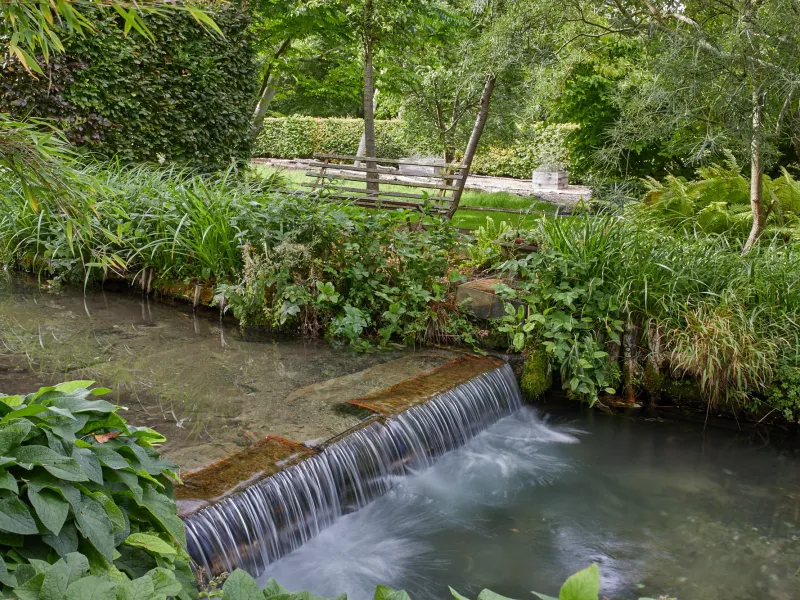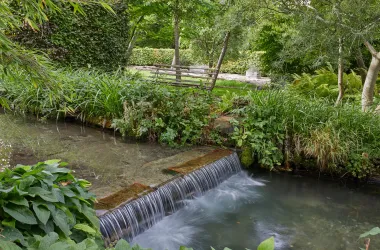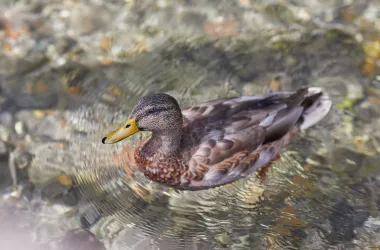Trees & Plants
There were several mature trees in the garden when the Rendel family moved in in 1975.
The oldest is a Taxus (Yew) Estimated to be 120 years old, it arches over the point where the two streams meet. There are 3 huge Black Poplars, 2 male , 1 female, est. age 100 years.
There is a large Swamp Cypress (Taxodium), est. age unknown. A big Ash (Fraxinus)
At least 30 Crack Willows (Salix Gracillis) were in the garden, large and well-established. Some of them must have fallen during severe storms and is is assumed that the previous owners were too elderly or infirm to cope with clearing. However, the result is that the garden now benefits from the quirky configurations that the willows were left in and allowed to re-root and re-grow from wherever they landed.
Over the past four decades many more trees have been planted. Thus there is now a large collection of Willows: Salix Alba, S. Fargesii, S.Hastata, S.Lindleyana, S.Magnifica, S. Udensis, S. Purpurea Nana, S. Melanostachys amongst others.
Other trees of interest include: Loquats, Azaras (Microphylla and Uruguayensis), Parrotia Persica,
Pterocarya Fraxinifolia, Sorbarias and Alnus Barbata
In addition, the garden benefits from uninterrupted views of large, beautiful trees in neighbouring gardens: a Beech avenue across the road, a Weeping Willow near the entrance, a bell-shaped Hawthorn and a stunning Copper Beech in the field next door.
PATHS
All parts of the garden are connected through winding paths – three of them are hidden.
HEDGES
Varying in height, width and colour hedges define the layout of the garden in winter. They consist of Yew, Beech, Sarcococca Confusa and Box. There is a mixed laid hedge and a Jerusalem Artichoke hedge (summer only).
PLANTS
Bamboos (various heights and leaf size) , Phyllostachys, ornamental grasses (some evergreen), Solidago (Golden Rod) – in profusion! Ferns (some evergreen), Aquatic and Marginal Plants e.g. Darmera, Caltha palustris, Petasites Hybridus ( Giant Butterbur), Alpines, Cacti and Succulents
SCENTS
Chimonanthus Praecox (January) , Sarcococca Confusa (February), Azara Microphylla (March), Azara Uruguayensis (late May), Solidago (late July, early August)
COLOURS
Red flowers on the two male Black Poplars (March), yellow flowers on the field of Solidago (see above), catkins in white, black and red on the various Willows in spring. Red branches on Cornus (Dogwood) in winter. The yellow flowers of Solidago turning into white/grey seed heads on brown leafless stems in December. A succession of colours in the herb garden throughout the year.
Wildlife
Ducks, moor hens, herons, white egrets, woodpeckers, tree creepers, grey or yellow wagtail etc.
Man-Made Structures
COVER on UNPLANTED AREAS: bricks (different kinds), gravel (different sizes), wood chips,
TEXTURES
The deeply pleated bark of the three Black Poplars; the peeling, white bark of the Carpenteria.
MAN-MADE STRUCTURES
Several bridges over the Millbrook, planters made out of recycled timber, a log path.
THE GARAGE
This building was designed by Anna Woodeson, around 2000 whilst she was Associate Director at Wilkinson Eyre Architects. Green Oak was used for the construction and the glass wall overlooking the garden also makes it an excellent workshop throughout the year.
BRIEF MOMENTS of MAGIC
Watching steam rise from the Millbrook on a frosty morning, seeing the sun set on the tallest trees (throughout the year), standing in a blizzard of flowers from the female Black Poplar in June (the flowers are like big blobs of cottonwool, mostly disintegrating on their way down ) , seeing the effect of frost on the flowers of Solidago ( turning 'Golden' Rod into 'Silver' Rod)





